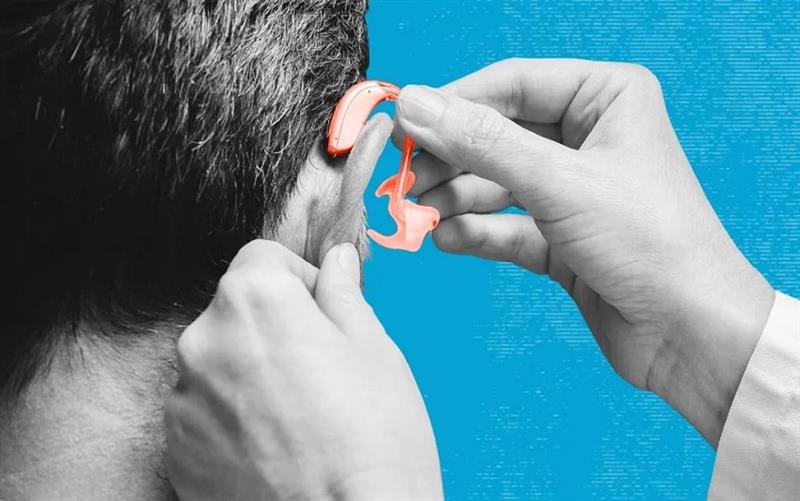
We'll go over the three primary forms of hearing loss, their typical causes, and common remedies for each. But it's crucial to keep in mind that every patient is different. Every case of hearing loss is unique, and some individuals may respond well to a certain treatment while others may not.
The area of your hearing that is affected determines the sort of hearing loss you have. Hearing loss can be classified into three categories:
Conduction-related hearing loss
When sound cannot pass through the outer or middle part of your ear, hearing loss of this type results. If you've ever had an earwax buildup, which can result in conductive hearing loss, you might have already experienced this.
Soft sounds are typically harder to hear and louder sounds may be distorted or muffled as a result. Aside from being a symptom of the cause, your ear may also feel uncomfortable or painful.
The outer, middle, and inner ear are the three components that make up your ear. When sound waves cannot pass through the outer and middle ear, conductive hearing loss results. It could be difficult to hear subtle noises. Larger noises might be muffled.
One of the following factors frequently results in conductive hearing loss:
- Your ear canal has a buildup of earwax.
- A middle ear infection or an ear canal infection
- Fluid in the ear, frequently related to allergies or colds
- You have an eardrum hole.
- Poor eustachian tube function—the tubes that link your middle ear and nose and allow fluid to drain—is one genetic culprit.
- Possibly an outer or middle ear birth deformity
- Middle ear fluid brought on by allergies or a cold.
- Otitis media, or an ear infection. Medial refers to the middle ear, while otitis is a phrase used to denote ear infection.
- Malignant tumours. Although they are benign tumours, they might obstruct the middle or outer ear.
- Your ear canal is blocked with cerumen, or earwax.
- External otitis is an infection of the external ear canal. This is sometimes referred to as swimmer's ear.
- A foreign body lodged in your outer ear. An illustration would be if your kid accidentally got a pebble in his ear while playing outside.
- An issue with the middle or outer ear development. Some people don't have an outer ear by birth. A malformed ear canal or an issue with the middle ear bones may be present in some people.
Loss of Sensorineural Hearing
When your inner ear is harmed, sensorineural hearing loss (SNHL), the most prevalent sort of hearing loss, develops. Damage to the nerves in and around your ear is another potential cause. Similar to other types of hearing loss, SNHL makes it challenging to perceive faint sounds and muddles or obscures loud noises.
The outer, middle, and inner ear are the three components that make up your ear. SNHL, also known as sensorineural hearing loss, follows injury to the inner ear. SNHL can also be brought on by issues with the nerve connections between your inner ear and your brain. It could be difficult to hear soft sounds. Even louder noises may be distorted or muffled.
Sensorineural Hearing Loss: The Causes
The following factors may contribute to this kind of hearing loss:
- Illnesses.
- Hazardous drugs for the hearing.
- Family history of hearing loss.
- Aging.
- An impact to the head.
- An issue with the inner ear's development.
- Hearing explosions or loud noises.
- Many ailments
- Head trauma, such as a severe head injury
- Inherited hearing loss
- Exposure over an extended amount of time to loud noises or explosions
- A few medications that alter the ears
Uncertain Hearing Loss
Mixed hearing loss is a less common type of hearing loss that develops when both conductive and sensorineural hearing loss occur simultaneously. This indicates that the inner ear/nerves as well as the outer/middle ear have been damaged.
A conductive hearing loss, also known as an SNHL, can occasionally occur simultaneously with a sensorineural hearing loss. This indicates that there could be harm to the inner ear or the nerve supply to the brain, as well as to the outer or middle ear.
A combination of conductive hearing loss and SNHL sources can result in mixed hearing loss. As an illustration, consider a person who has SNHL because of their advanced age and an earwax obstruction. Together, the two would cause hearing loss, which would likely be worse than if only one of the issues existed.
Since so many factors might contribute to mixed hearing loss's causes, it is impossible to say whether it can be cured. It is necessary to approach every issue separately. The conductive part of it may be treatable, but a hearing aid may be necessary for the SNHL.
Mixed Hearing Loss Factors
A mixed hearing loss can result from anything that causes conductive hearing loss or SNHL. An illustration would be if you work in an environment with loud noises and you have fluid in your middle ear. Your hearing could get worse from the two issues combined than it would be from just one.
It's ideal to keep yourself as educated with your hearing aids and a new breakthrough in the technology. Ask your query via Book an Appointment today. For more information visit https://hearing.careinc.ca or you can call us today at (403)605-6300